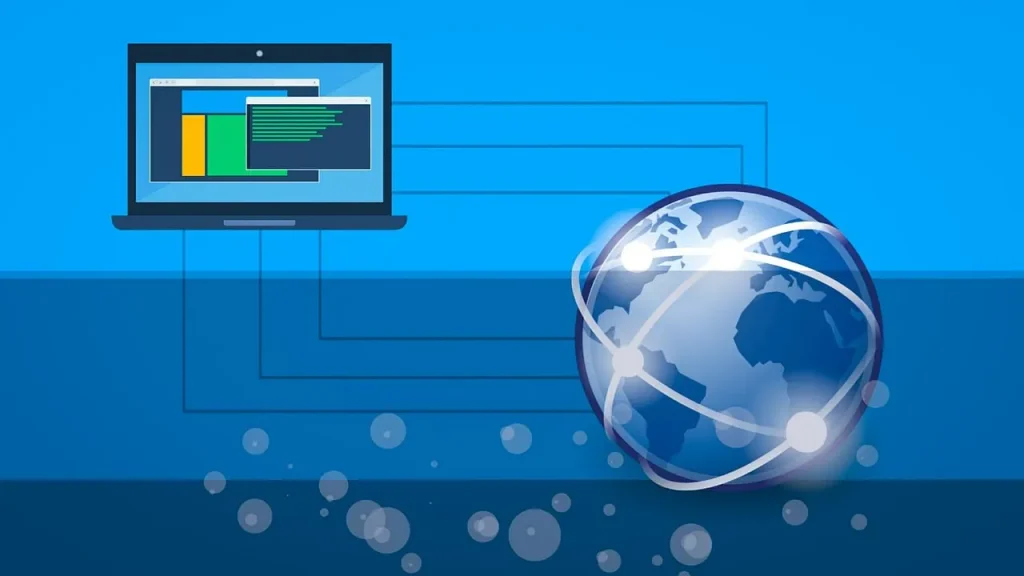- IPv4 stands for Internet Protocol version 4 and is a numerical label assigned to each device connected to a computer network that uses the Internet Protocol for communication.
- An IPv4 address is a 32-bit number typically expressed in four decimal numbers separated by periods. Each decimal number represents 8 bits, resulting in a total of four octets.
- IPv4 addresses are used to identify and locate devices on a network, enabling data packets to be routed across the Internet to their intended destination.
At the heart of the internet’s connectivity lies the Internet Protocol (IP) address, a numerical label that facilitates the exchange of data between devices on a network. Among the various iterations of IP addresses, IPv4 stands as a cornerstone, providing a foundational framework for network communication.
- What is IPv4 address, really?
- The anatomy of IPv4 addresses
- Regional Internet Registries: Gatekeepers of IPv4 distribution
- IPv4 classification
- Static vs. Dynamic IPv4 Addresses
- The importance and challenges of IPv4 addresses
- IPv4 address shortage and the move to IPv6
- IPv4 vs. IPv6: Key Differences
- Why IPv4 still matters today
- Best practices for managing IPv4 addresses
- FAQs
What is IPv4 address, really?
Paul Haskell-Dowland and Bogdan Ghita define IP address, including IPv4, as follows: “An IP (Internet Protocol) address — which also has its own implicit structure — is fundamentally a numeric address for an endpoint on the internet.” This description, while precise, opens the door to a deeper understanding of a concept that underpins nearly every aspect of modern digital communication. But what differentiates an IP address from IPv4? To understand the connection, it is essential to delve into the evolution of the protocol and its foundational role in global networking.
IP, or Internet Protocol, is the framework that allows devices to locate and communicate with one another over the internet. It’s a universal addressing system akin to a global postal service, ensuring that data reaches the correct destination. IPv4, the fourth version of this protocol, is the most widely implemented standard, marking a critical phase in the internet’s expansion during its formative years.
Launched in 1981, IPv4 introduced a structured yet straightforward system of addressing, using 32 bits to define each unique address. These 32 bits are grouped into four segments, expressed in decimal format as numbers separated by periods—for example, 192.168.1.1.
An IP (Internet Protocol) address — which also has its own implicit structure — is fundamentally a numeric address for an endpoint on the internet.
Paul Haskell-Dowland and Bogdan Ghi
The anatomy of IPv4 addresses
IPv4 addresses are composed of 32 bits, segmented into four octets of eight bits each. These octets are expressed in decimal form, with each octet representing a number from 0 to 255. The address is written in the form of four decimal numbers separated by periods (e.g., 192.168.1.1).
IPv4 addresses are structured into four octets, each representing 8 bits. These octets are expressed in decimal form, ranging from 0 to 255. For instance, the address 203.0.113.0 is composed of the following four octets:
- 203
- 0
- 113
- 0
IPv4 addresses follow a hierarchical addressing scheme. The first portion of the address identifies the network to which the device belongs, while the remaining bits specify the individual device within that network. This hierarchical structure facilitates efficient routing of data packets across networks.
Every device connected to a network is assigned a unique IPv4 address. This address serves as a distinct identifier, allowing devices to be located and communicated with across the Internet.
This 32-bit structure allows for approximately 4.3 billion unique IP addresses (2^32). While this may seem like a vast number, the growth of the internet and connected devices has made it clear that the IPv4 address space is nearing its limit. This limitation is one of the key factors that has led to the development of IPv6.
Also read: Navigating IPv4 address exhaustion: Strategies and solutions

Regional Internet Registries: Gatekeepers of IPv4 distribution
The allocation and management of IPv4 addresses fall under the jurisdiction of Regional Internet Registries (RIRs). These organisations, overseen by the Internet Assigned Numbers Authority (IANA), are responsible for distributing IP addresses to local registries, ISPs, and large-scale network operators. There are five RIRs worldwide: ARIN (North America), RIPE NCC (Europe and West Asia), APNIC (Asia-Pacific), LACNIC (Latin America and the Caribbean), and AFRINIC (Africa).
Each RIR handles the distribution of IPv4 addresses to local internet service providers (ISPs), businesses, and other entities.
IPv4 classification
IPv4 addresses are divided into five different classes based on their intended use. These classes are essential for efficient network management and routing of data across the internet. Each class is defined by the range of addresses it covers and its application.
- Class A:
- Range: 0.0.0.0 to 127.255.255.255
- Use: Designed for large networks, Class A addresses allow for over 16 million hosts within a single network. The first octet identifies the network, while the remaining three octets are used to identify devices.
- Network/Host Allocation: 8 bits for the network, 24 bits for hosts
- Purpose: Designed for large networks, such as multinational organizations
- Example: 10.0.0.1
- Class B:
- Range: 128.0.0.0 to 191.255.255.255
- Use: Class B addresses are used for medium to large-sized networks, allowing for around 65,000 hosts per network. The first two octets identify the network, while the last two are used for devices.
- Network/Host Allocation: 16 bits each
- Purpose: Used by medium to large networks, such as universities or corporations
- Example: 172.16.0.1
- Class C:
- Range: 192.0.0.0 to 223.255.255.255
- Use: Class C addresses are commonly used for smaller local area networks (LANs). The first three octets are used to identify the network, with the final octet used for hosts.
- Network/Host Allocation: 24 bits for the network, 8 bits for hosts
- Purpose: Ideal for small local area networks (LANs)
- Example: 192.168.1.1
- Class D:
- Range: 224.0.0.0 to 239.255.255.255
- Use: Reserved for multicasting, Class D addresses are used to send data to multiple devices simultaneously. These addresses do not identify single hosts but rather groups of devices.
- Example: 233.1.1.1
- Class E:
- Range: 240.0.0.0 to 255.255.255.255
- Use: Class E addresses are reserved for experimental use and research purposes. These addresses are not used in typical networking functions.
Also read: Understanding IPv4 addresses: Exploring 2 key features
Static vs. Dynamic IPv4 Addresses
Static IPv4 Addresses
Static IPv4 addresses are manually assigned to a device and remain unchanged. They are commonly used for servers, routers, and other devices requiring a consistent address for uninterrupted operation.
Advantages:
- Predictable and reliable
- Suitable for hosting websites and email servers
Disadvantages:
- More management effort
- Limited scalability for large networks

Dynamic IPv4 Addresses
Dynamic addresses, assigned by a Dynamic Host Configuration Protocol (DHCP) server, change over time. These addresses are commonly used for residential internet connections.
Advantages:
- Easier management
- Efficient use of the limited IPv4 address pool
Disadvantages:
- Unsuitable for hosting services
- Potential connection interruptions during address changes
The importance and challenges of IPv4 addresses
IPv4 addresses have been fundamental to the operation of the internet for decades. They allow for devices to connect, communicate, and exchange data across vast distances. The internet would not function as we know it without IPv4 addressing.
However, as the number of devices connected to the internet continues to grow—especially with the rise of the Internet of Things (IoT)—the IPv4 address pool is rapidly depleting. This poses a significant challenge for network administrators and the global internet infrastructure. IPv4 addresses are finite, and with the proliferation of smart devices, mobile phones, and connected objects, the demand for new IP addresses has surged.
Also read: Alexander Timokhin: IPv4 market stability and future strategies
IPv4 address shortage and the move to IPv6
One of the major challenges facing IPv4 is the limited number of addresses available. IPv4 can only provide around 4.3 billion unique addresses, but with over 20 billion devices expected to be connected to the internet by 2025, this pool is fast running out.
To address this shortage, a new version of IP addressing, IPv6, was developed. IPv6 uses 128-bit addresses, significantly expanding the available address space. While IPv6 adoption is underway, the transition from IPv4 to IPv6 is complex and slow. Many networks and devices still rely on IPv4, and the transition to IPv6 will likely take years to fully implement.
Also read: IPv4: Status, challenges and the way forward
Despite this, the transition to IPv6 is seen as essential for the continued growth of the internet and for the future of network connectivity. IPv6 addresses the limitations of IPv4 by offering an almost unlimited number of addresses, making it ideal for the rapidly expanding world of connected devices.

IPv4 vs. IPv6: Key Differences
Address Space
- IPv4: 32-bit, approximately 4.3 billion addresses
- IPv6: 128-bit, trillions of unique addresses
Format
- IPv4: Decimal format (e.g., 192.168.1.1)
- IPv6: Hexadecimal format (e.g., 2001:0db8:85a3:0000:0000:8a2e:0370:7334)
Features: IPv6 introduces advanced features like built-in security, autoconfiguration, and more efficient routing, addressing many limitations of IPv4.
Why IPv4 still matters today
Although IPv6 adoption is gaining momentum, IPv4 is far from obsolete. Most of the internet’s infrastructure still relies on IPv4, and many devices, networks, and services are yet to make the switch to IPv6. This means that understanding and managing IPv4 addresses remains crucial for network administrators, especially when it comes to managing legacy systems and ensuring compatibility between different networks.
Additionally, many internet service providers (ISPs) and businesses are still making use of techniques such as Network Address Translation (NAT) to extend the usability of IPv4 addresses. NAT allows multiple devices within a private network to share a single public IPv4 address, thus mitigating the shortage of available addresses. While this is a temporary solution, it highlights the ongoing relevance of IPv4 in the global internet ecosystem.
Also read: Professor Li Xing: The challenges of IPv4 and IPv6 in China
Best practices for managing IPv4 addresses
Given the impending depletion of IPv4 addresses and the ongoing need for compatibility with both IPv4 and IPv6, effective management of IPv4 addresses is critical. Here are some best practices for managing IPv4 addresses in modern networks:
- Subnetting: Subnetting allows network administrators to divide a larger IP address block into smaller subnets. This can help maximize the use of available IP addresses, especially in large networks.
- IP Address Management (IPAM): Implementing an IPAM solution helps track and manage the allocation of IPv4 addresses. This ensures that addresses are used efficiently and reduces the likelihood of conflicts.
- Network Address Translation (NAT): NAT can help extend the lifespan of IPv4 by allowing multiple devices on a private network to share a single public IP address.
- Dual Stack Networks: Running IPv4 and IPv6 on the same network (dual stack) allows for greater flexibility and ensures compatibility between older IPv4 systems and newer IPv6 networks.
IPv4 addresses remain a fundamental component of the global internet infrastructure. Despite the challenges posed by the shortage of available addresses, IPv4 continues to facilitate the seamless exchange of data across the internet. The move to IPv6 offers a solution to these limitations, but IPv4 will continue to play a critical role for years to come.
Also read: LARUS launches auction platform for IPv4 address transactions
Understanding how IPv4 addresses work, the different classes of addresses, and the importance of efficient address management is essential for anyone involved in network administration. As we continue to embrace new technologies and a more connected world, IPv4 will remain an integral part of the internet’s foundation, even as the transition to IPv6 slowly takes shape.
FAQs
The primary function of an IPv4 address is to uniquely identify devices on a network and ensure data packets are sent to the correct destination. It serves as the address that allows devices to communicate within a network or over the internet.
An IPv4 address is 32 bits long, which is divided into four octets (or 8-bit sections). Each octet is represented by a decimal number between 0 and 255, and the entire address is written in a dotted decimal format (e.g., 192.168.1.1).
A static IPv4 address is manually assigned and does not change over time, making it ideal for devices that require a consistent address, such as servers or printers. A dynamic IPv4 address, on the other hand, is assigned by a DHCP (Dynamic Host Configuration Protocol) server and can change each time the device connects to the network.
The shortage of IPv4 addresses is a concern because the number of available unique addresses is limited (around 4.3 billion), and with the growing number of internet-connected devices, these addresses are becoming exhausted. To address this, organizations are adopting IPv6, which offers a vastly larger address space, and using techniques like Network Address Translation (NAT) to allow multiple devices to share a single public IPv4 address.
NAT allows multiple devices within a local network to share a single public IPv4 address. This is achieved by mapping the private IP addresses of devices on the local network to a public address when they communicate over the internet. NAT helps alleviate the scarcity of available IPv4 addresses and ensures efficient use of the available address space.

